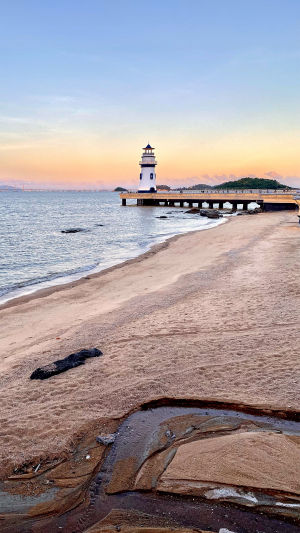Lighthouses stand as iconic and enduring symbols of maritime heritage in the United States, each a sentinel perched on rugged shores or rocky promontories, guiding ships safely through treacherous waters.
These towering beacons have played a crucial role in the nation's history, serving as both navigational aids and cultural landmarks that evoke a sense of adventure, romance, and the challenges of seafaring life.
From the picturesque cliffs of Maine to the sun-soaked coasts of California, the lighthouses of America weave a tapestry of stories that span centuries. The history of these structures is a testament to the nation's maritime evolution, reflecting technological advancements, architectural ingenuity, and the spirit of exploration.
The first lighthouse in the United States was established in 1716 in Boston Harbor. As maritime trade grew, so did the need for reliable navigation aids. Over the years, lighthouses proliferated along the nation's coastlines and waterways, each with its unique design and character. The Cape Hatteras Lighthouse in North Carolina, with its distinctive black and white spiral stripes, is one such example, recognized not only for its beauty but also for the engineering feat of its relocation further inland to escape the encroaching sea.
Lighthouses have always been more than functional structures; they are often intertwined with local lore and legend. The stories of lighthouse keepers who diligently tended the lights, braving storms and isolation, are woven into the fabric of maritime history. These keepers and their families developed tight-knit communities, forming the backbone of coastal societies. Tales of heroism and dedication, such as that of Ida Lewis who saved numerous lives off the coast of Rhode Island, showcase the integral role of lighthouses beyond their utilitarian purpose.
Technological advancements have transformed the way lighthouses operate. The transition from open flames to Fresnel lenses and, later, to automated electronic systems revolutionized navigation. However, even as automation reduced the need for constant human presence, the charm of lighthouses endured. Many lighthouses became protected historic landmarks, preserving their legacy for generations to come.
In contemporary times, lighthouses have found renewed appreciation not only for their historical significance but also as tourist destinations and symbols of maritime heritage. Travelers seek out these towering sentinels, often perched in remote and breathtaking locations, to capture their beauty in photographs, learn about their history in visitor centers, and experience a glimpse of the past.
Lighthouses also serve as symbols of resilience and hope. They stand firm against the relentless forces of nature, weathering storms, and guiding vessels through even the darkest nights. This steadfastness has led to their adoption as symbols of strength and guidance, appearing on postage stamps, state emblems, and even inspiring literature and art.
The future of America's lighthouses is a balance between preservation and innovation. Efforts to restore and maintain these structures face challenges, from erosion to funding constraints. However, the allure of lighthouses ensures that many will continue to stand tall, offering glimpses into the nation's maritime history.
The lighthouses of America embody a rich tapestry of history, perseverance, and innovation. These structures have guided countless sailors to safety, weathering the tests of time and the elements. From the storied coasts of New England to the wild shores of the Pacific Northwest, the lighthouses of America remain beacons of light, both in the literal and metaphorical sense, illuminating the past and guiding us into the future.





